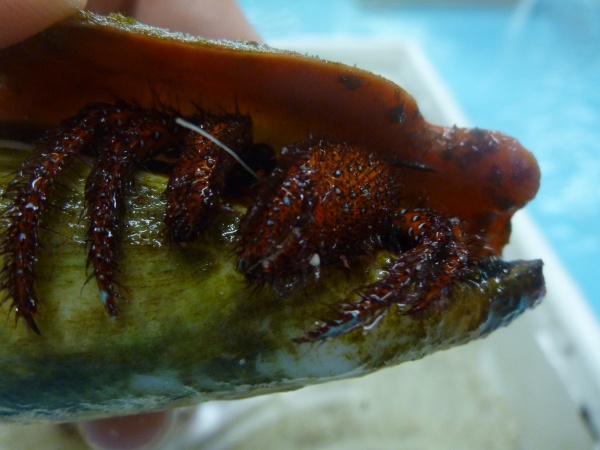Evolution & Systematics
The evolution and classification of hermit crabs is far from resolved. Currently, hermit crabs are considered to have appeared in the Jurassic and recent fossil discoveries have suggested that shells of ammonites, a once common but now extinct group of cephalopods, were exploited before a transition to the use of gastropod shells at the Cretaceous-Tertiary boundary. The strong relationship between hermit crabs and their hosts is key to their evolution, resulting in the characteristic twisting of the abdomen, the reduction and loss of some appendages and a new range of behaviours.
Hermit crabs are not true crabs, belonging to the group of decapod crustaceans known as the anomurans, well established as sister group to the true crabs, the brachyurans. Unlike brachyurans, hermit crabs have reduced fourth and fifth pereopods, a large asymmetrical abdomen and do not walk sideways. Phylogenetic classification within the anomura is currently much more confused, with multiple hypothesis put forth. Traditionally hermit crabs are known as the superfamily Paguroidea, under which their are seven families. These include Paguridae and Diogenidae, the two largest families, the latter including Dardanus. Diogenids are known as the left-handed hermit crabs, the major cheliped being the left, a distinguishing character along with a cervical groove of the carapace shield.
 |
| Photo: Storm Martin, Heron Island, 2012 |
|